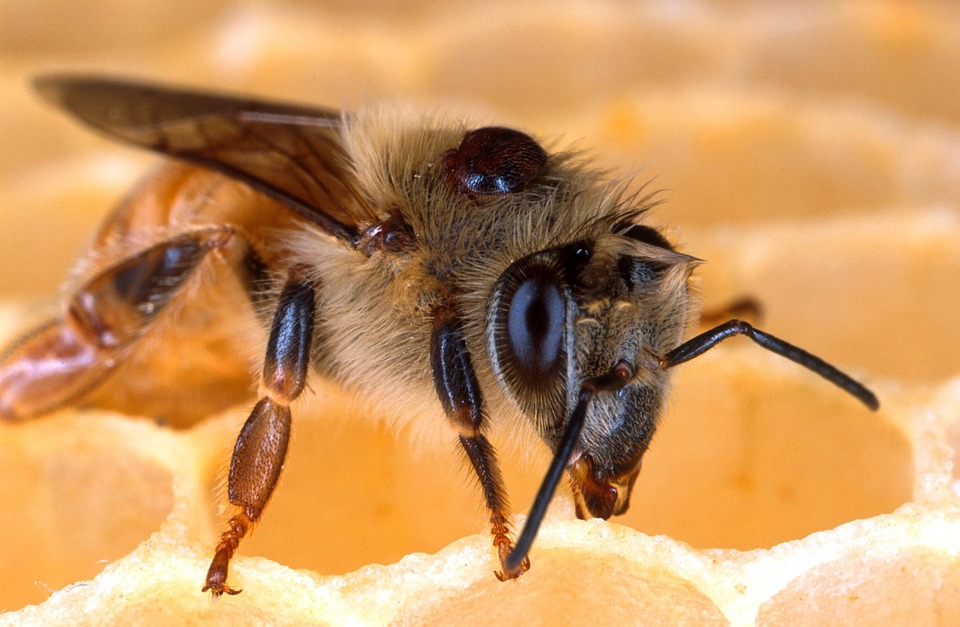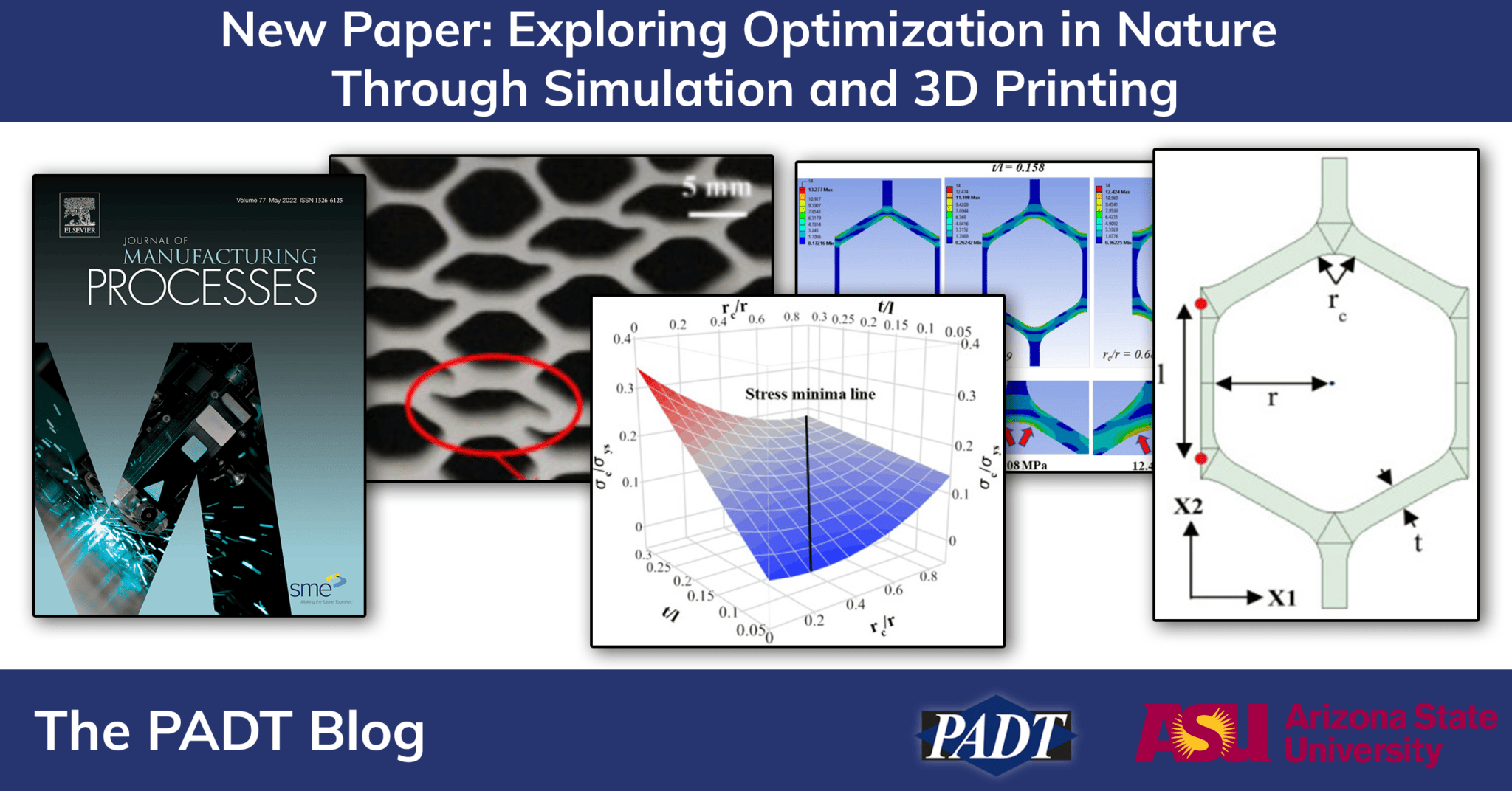PADT’s Alex Grishin, PhD Partners with ASU Faculty and Staff to study “Parametric optimization of corner radius in hexagonal honeycombs under in-plane compression”
While working together on a NASA-funded PHASE 1 STTR, PADT and ASU were exploring how nature has evolved optimized structures. In their preliminary research, they became fascinated by the way insects built a different corner radius in “hexagonal cell nests.” These structures, the best-known example are honeycombs, use a repeated hexagonal cell, but the corners in the cell always have a radius.
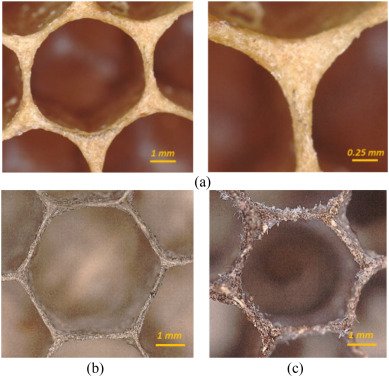
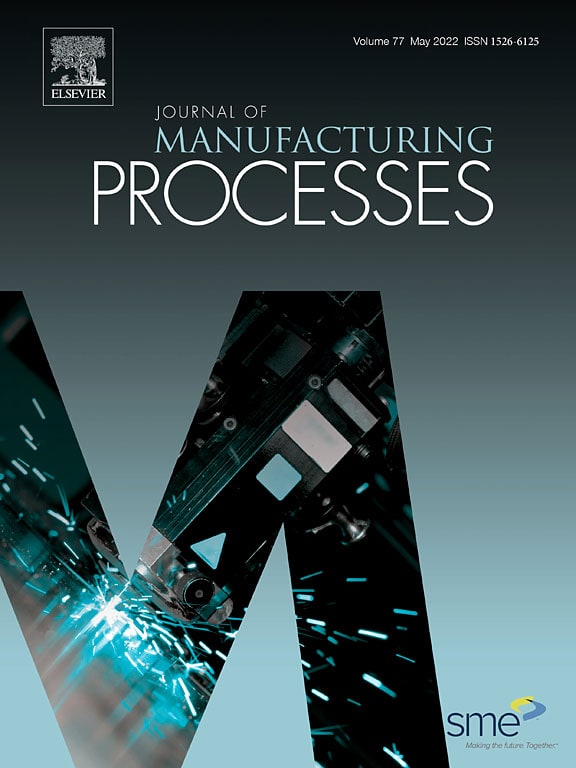
This interest turned into the question, what is the optimal corner radius for a given compressive load? Several years and groups of grad students later, the resulting research was published in the Journal of Manufacturing Processes, Volume 79, in July of 2022.
You can read the paper at this link.
As the abstract points out, they used a 400-point design of experiments study using parametric 2D plane strain Ansys Mechanical model to look at how cell size, beam geometry, and corner radius impacted the effective stiffness and corner stresses. They found an optimum corner radius that was a function of beam thickness, beamwidth, and the ratio of width to thickness.
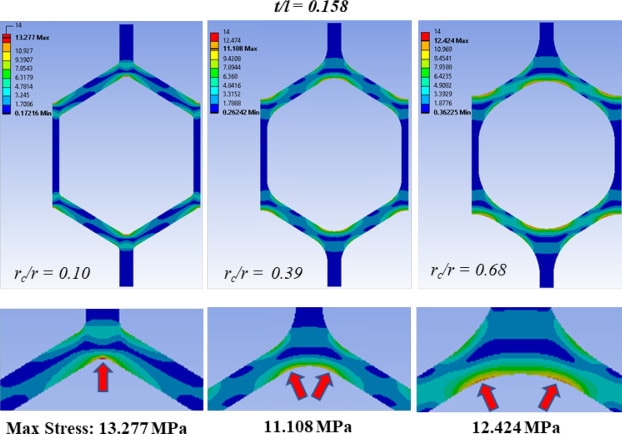
Further large deflection simulation and then testing showed that changes in the corner radius shifted the failure mode under increasing compression from fracture to plastic hinging. This is important because honeycomb structures are used for energy absorption applications like bumpers and crumple zones. Extensive 3D Printing of both polymer and metal structures was used to create the cellular structures being optimized.
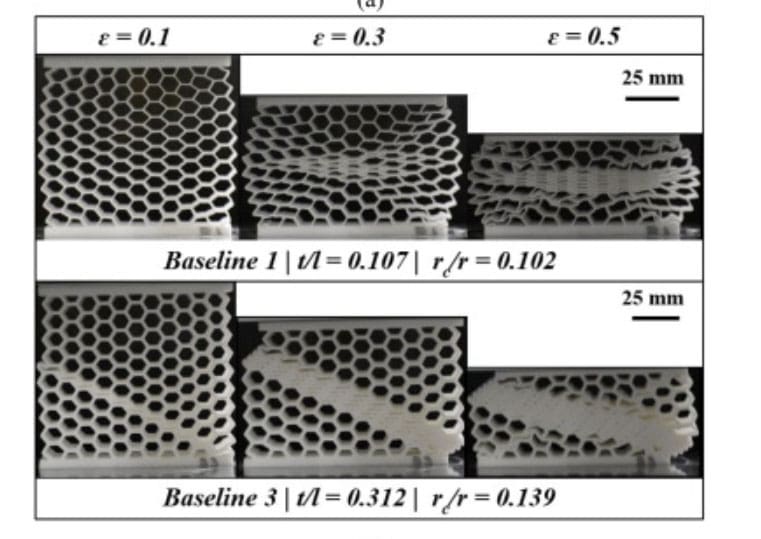
Dr. Grishin worked with ASU Professor Dhruv Bhate, PhD, and a variety of students over the course of the study. This project came out of a PHASE1 STTR that was followed by two more STTR efforts:
- Phase II STTR: “Aperiodic Lattice Design Optimization for Multi-Functional Lightweight Aerospace Structures”
- With Arizona State University (ASU) and Kennesaw State University (KSU)
- Phase III STTR: “Thermo-Fluid and Structural Design Optimization for Thermal Management”
- With Arizona State University (ASU) and Penn State University.
The Phase III study will is focused on developing a multiphysics optimization tool that, like nature, optimizes geometry for multiple loads applied via different physics – structural, thermal, vibration, and fluid flow.
We want to thank our academic partners and especially our supporters at NASA. The opportunity to use advanced technology like 3D Printing and Simulation along with traditional testing was a fantastic opportunity for students to explore biomimicry and understand the physics and math behind natural structures.
Combining 3D Printing and Simulation to Explore and Understand
This project is a great example of how PADT combines its three core technologies, Simulation, Design, and Additive Manufacturing to help our partners and customers achieve their goals. In this situation, we aided in accomplishing meaningful and commercially useful research. How can we help your team meet your goals? Reach out, and let’s talk about it.
